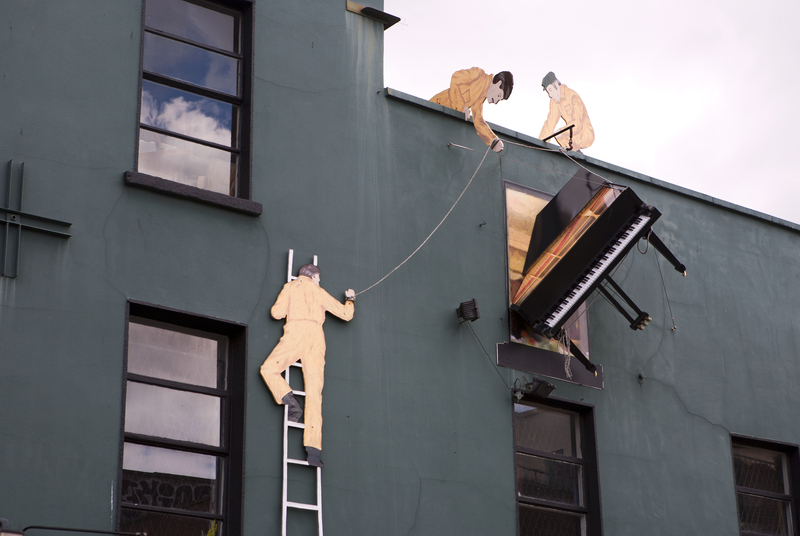Step-by-Step Guide to Piano Moving and the Dangers of Going Solo
Moving a piano is an intricate process that requires careful planning, skill, and the right equipment. Whether you have a cherished upright piano, a digital keyboard, or a majestic grand, ensuring its safety during a move is crucial. Many people contemplate tackling the move themselves, lured by the prospect of saving money. However, going solo comes with significant risks, both to your instrument and to yourself.
In this in-depth, SEO-friendly guide, we'll walk you through a step-by-step process for moving a piano safely, and examine the hidden dangers of DIY piano moving. You'll learn why hiring professionals is often the best choice, as well as tips for ensuring your move is stress-free and successful.
Understanding the Challenges of Piano Moving
Pianos are far more than just another piece of furniture--they are finely-tuned, complex, and often sentimental musical instruments. Before diving into the process, let's consider what makes piano moving such a challenging endeavor:
- Weight & Size: Pianos typically weigh between 300 and 1,200 pounds (136-544kg). Their size and weight distribution make them awkward to lift and transport.
- Fragility: Internally, a piano contains thousands of delicate, moving parts. External damage can also affect sound and value.
- Shape & Balance: Many pianos have curved bodies and protruding parts, making them especially difficult to navigate through tight spaces.
- Value: Pianos can be extremely costly, both in terms of monetary and sentimental value.
Types of Pianos and Unique Moving Considerations
- Upright Piano: Compact but heavy, upright pianos are tall and narrow, requiring upright handling to avoid damage.
- Grand Piano: Grand pianos are wider and require partial disassembly, adding complexity to the move.
- Digital Piano: While lighter, digital keyboards may still require careful handling, especially for large models with stands.

Is It Safe to Move a Piano by Yourself? The Real Dangers
Attempting a piano move alone can be far riskier than it initially appears. Let's explore the most significant hazards involved:
1. Physical Injury
- Back Sprain, Muscle Strain, and Hernias: The immense weight can overload your muscles, leading to painful injuries.
- Crushed Fingers & Toes: Pianos can slip or tilt suddenly, putting your extremities at severe risk.
- Falls & Trips: Navigating stairs or tight spaces increases the chance of tripping and falling--potentially resulting in serious harm.
2. Damage to the Piano
- Broken Legs, Casters, or Pedals: Mishandling, improper lifting, or bumping against obstacles can compromise these essential parts.
- Scratched, Dented, or Chipped Exterior: Tight turns and narrow doors may mar the piano's finish or damage decorative details.
- Internal Mechanism Issues: Sudden jolts or impacts may knock mechanics out of alignment, causing expensive repairs.
3. Property Damage
- Dented Walls and Floors: The instrument's weight can leave scuffs, gouges, or cracks in hardwood, tile, or carpeted floors.
- Doorframe Breakage: Improper maneuvering can damage molding, plaster, and even the structural integrity of home entries.
4. Underestimating Required Equipment
Without the correct piano moving tools--including straps, furniture dollies, padding, and ramps--you risk failure from the start. Improvised equipment increases the danger exponentially.
Step-by-Step Piano Moving Guide
Should you choose to move a piano yourself, it's essential to plan meticulously and never attempt a solo piano move. Even with multiple people, extreme caution is needed. Below is a comprehensive guide for a safer piano moving experience:
1. Gather Needed Supplies and Helpers
- At least 3-4 strong helpers (Never try it solo!)
- Moving straps and forearm forklifts for safe lifting
- Heavy-duty furniture dolly (rated for your piano's weight)
- Thick moving blankets and padding to protect both the piano and your property
- Plastic wrap or tape to secure coverings
- Measuring tape (for doorways and hallways)
- Sturdy gloves for grip and safety
- Plywood sheets or loading ramp (for stairs or uneven surfaces)
- Proper footwear (closed-toe, non-slip)
2. Plan the Route
- Measure all doorways, hallways, and stairways the piano will pass through.
- Clear the path of all obstacles--rugs, plants, furniture, etc.
- Plan rest stops if any part of the move will take extended time or require extra care, such as stairs.
3. Prepare the Piano
- Lock the keyboard lid to prevent it from popping open.
- Wrap the piano completely in thick moving blankets; secure with tape or straps.
- Remove detachable parts (music stands, wheels, or legs on a grand piano).
- For grand pianos, detach the lyre and pedals.
4. Lifting and Placing the Piano on the Dolly
- Communicate clearly with your helpers--agree on commands and signals beforehand.
- Lift with legs, keep the piano upright, and never twist your back while carrying weight.
- Position the piano carefully on the dolly.
- For grand pianos, place it flat on its side on a piano board, and strap it securely.
5. Moving Through the Building
- Move slowly and steadily, keeping the piano's weight balanced at all times.
- At doorways and corners, use spotters to guide the instrument and protect walls.
- For stairs, use a ramp or board and lift with all helpers in sync--never drag the piano.
6. Loading the Piano into the Moving Truck
- Use a ramp to roll the piano into the truck safely.
- Position the piano securely against the wall of the truck, upright and stabilized with locking straps.
- Pad all sides to prevent bumps in transit.
7. The Arrival and Set-Up
- Reverse the preparation steps--carefully move the piano off the truck, through your new home, and into its final location.
- Remove all wraps and pads after placing it in position.
- Have a professional tuner visit, as moving may disrupt tuning and alignment.
Why Hiring Professional Piano Movers is a Wise Decision
Hiring piano movers might seem like an added expense, but the value is undeniable. Here's what professional piano movers bring to the table:
- Experience: Trained teams know how to navigate all piano types, tight spaces, stairways, and potential obstacles.
- Specialized Equipment: From skid boards to climate-controlled trucks, pros use gear made specifically for secure piano transport.
- Insurance: Professional movers are insured, protecting your instrument and property against unforeseen events.
- Peace of Mind: Entrusting your cherished instrument to experts lets you focus on other aspects of your move.
Essential Piano Moving Safety Tips
- Never move a piano alone: Always involve multiple helpers or hire professionals.
- Wear proper safety gear: Gloves, closed-toe shoes, and back support can prevent injuries.
- Use the right equipment: Don't substitute household items for proper moving tools.
- Communicate constantly: Ensure everyone helping is aware of next steps, obstacles, and pace.
- Don't rush: Take your time and use caution at every phase.
- Protect surfaces: Pad floors, door frames, and walls along the route.
- Plan for the environment: Watch for slippery, icy, or wet surfaces that increase risk.

Frequently Asked Questions about Piano Moving
Q: Can I move my piano with just one other person?
Ideally, you should have at least three or four capable helpers. Pianos are heavy and awkwardly balanced; two people alone risk severe injury and piano damage.
Q: How much does hiring a professional piano mover cost?
Costs vary based on size, weight, complexity (stairs, distance), and location. Average prices range from $150 to over $1,000 for grand pianos or long-distance moves. Compare this to the potential cost of repair or medical bills if things go wrong.
Q: Will moving a piano knock it out of tune?
Yes. Even carefully moved pianos will generally need a tuning shortly after arriving at their new home. Movements and environmental changes can affect tuning and internal alignment.
Q: How do professional piano movers protect an instrument during transport?
Pros use thick padding, secure wraps, piano boards, and specialized dollies, and take care to keep the piano upright. They also secure the piano in the moving truck to prevent shifting and absorb vibration.
Conclusion: Choose Safety First When Moving Your Piano
Moving a piano can seem straightforward until you face its weight and bulk firsthand. The dangers of attempting a solo piano move are significant. While the steps above lay out the safest DIY method possible, nothing replaces the skill and security of professional piano movers.
If you treasure your piano--as an investment, a centerpiece, or a beloved instrument--put its safety first. Whether hiring experts or undertaking the task with ample help, never try to move a piano alone. Your health, your piano's condition, and your property will all thank you for your caution and care. For the best outcome, get quotes and consult with local piano moving professionals before your next move. Safe moving!



